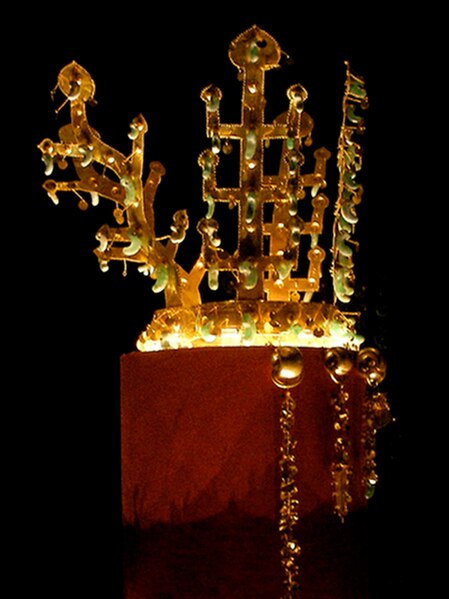The crowns of Silla were made in the Korean kingdom of Silla approximately in the 5th–7th centuries.
A gold crown from Hwangnamdaechong National Treasure No. 191.
A golden inner cap of a Silla crown from the sixth century.
The crown jewels of Silla.
This crown was excavated from Grave Six in Tillia Tepe, Afghanistan and is estimated to be from the first or second century. The style of the crown strongly suggests a Scytho-Iranian connection with Korea.
A crown is a traditional form of head adornment, or hat, worn by monarchs as a symbol of their power and dignity. A crown is often, by extension, a symbol of the monarch's government or items endorsed by it. The word itself is used, particularly in Commonwealth countries, as an abstract name for the monarchy itself, as distinct from the individual who inhabits it. A specific type of crown is employed in heraldry under strict rules. Indeed, some monarchies never had a physical crown, just a heraldic representation, as in the constitutional kingdom of Belgium.
Imperial Crown of Kingdom of Sicily (Crown of Constance of Aragon, Cathedral of Palermo).
Imperial Crown (Benkan) of Emperor Kōmei of Japan
Imperial Crown of Austria
Imperial Crown of Russia, 2012 replica








